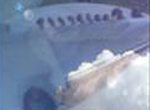![Show/hide content [x]](themes/dragonfly/images/minus.png) Menu Principale
![Show/hide content [x]](themes/dragonfly/images/minus.png) Info Utente
![Show/hide content [x]](themes/dragonfly/images/minus.png) Floating Sarod
![Show/hide content [x]](themes/dragonfly/images/minus.png) Discografia
![Show/hide content [x]](themes/dragonfly/images/minus.png) Visite 39987449pagine viste dal 1 Settembre 2007
|
Lubricant Strategies for Stamping Aluminum BIW Parts
| Autore |
Messaggio |
xysoom


Registrato: Mag 15, 2020
Messaggi: 1676
|
 Oggetto: Lubricant Strategies for Stamping Aluminum BIW Parts Oggetto: Lubricant Strategies for Stamping Aluminum BIW Parts
Inviato: 17-04-2021 4:17:37 |
 |
Lubricant Strategies for Stamping Aluminum BIW Parts
The use of aluminum in automobiles is anticipated to grow most significantly in the production of body-in-white (BIW) parts and closures. So, it makes sense to review the existing landscape of lubricants used throughout the process of forming such automotive parts.To get more news about lighting fixture hardware supply, you can visit tenral.com official website.
Using hot-melt lubricants, which provide substantial boundary lubrication on aluminum when compared to conventional oil- and water-based lubricants, has allowed automotive OEMs to replace many steel components with lighter aluminum components, including aluminum closures and body panels now found on several luxury vehicles. And as Ford developed its aluminum-body pickup truck, it found that hot melt was the only lubricant technology that would allow the forming of door inners and other complex parts.
Hot-melt lubricants can, however, prove challenging to use on higher-volume applications. While historically OEMs have used hot melt to form aluminum parts for low-volume luxury vehicles, using hot melt on higher-volume parts has led to problems during pretreatment caused by the high volume of wax entering the system. Other challenges:
Historically, automotive OEMs and their tier suppliers that stamp BIW parts and closures use blank-wash equipment at the window of the press line. These setups flood recirculating oil onto rollers through which blanks travel, removing solid particulate such as dirt and glove lint from the blanks and leaving a residue of fluid that serves as a lubricant in the stamping process. The process also covers, dry islands and smooths the migrated mill oil, leaving a uniform coating on the blanks.
Newer blank-wash systems, which remove particulate from blanks using brushes and a vacuum system, minimize the effect to coil coatings (prelube) and avoid the need to apply oil at the press. In cases where coils arrive at the plant already coated with conventional mill oil or prelube, these blank-wash setups may not operate exactly as intended. Conventional oils tend to migrate, so the oil coatings do not remain uniform. And, without rollers and applied oil, blanks can exit these systems without the proper amount of lubricant required for stamping.
Stampers can resolve this issue in one of two ways: Apply stamping lubricant to blanks as they exit the blank-wash on their way to the stamping operation; or have the mill apply thixotropic oils as mill oils or prelubes—these oils can substantially reduce coating migration.
|
|
| Torna in cima |
|
 |
|
Non puoi inserire nuovi Topic in questo forum
Non puoi rispondere ai Topic in questo forum
Non puoi modificare i tuoi messaggi in questo forum
Non puoi cancellare i tuoi messaggi in questo forum
Non puoi votare nei sondaggi in questo forum
Non puoi allegare file in questo forum
Non puoi scaricare il file da questo forum
|
|
![Show/hide content [x]](themes/dragonfly/images/minus.png) Menu Principale
Menu Principale HOME
HOME NADA YOGA
NADA YOGA AMBIENTI SONORI
AMBIENTI SONORI VISUAL SOUND
VISUAL SOUND MUSICA LIVE
MUSICA LIVE INDIAN MUSIC
INDIAN MUSIC UTILITA'
UTILITA' AREA RISERVATA
AREA RISERVATA![Show/hide content [x]](themes/dragonfly/images/minus.png) Info Utente
Info Utente![Show/hide content [x]](themes/dragonfly/images/minus.png) Floating Sarod
Floating Sarod![Show/hide content [x]](themes/dragonfly/images/minus.png) Discografia
Discografia![Show/hide content [x]](themes/dragonfly/images/minus.png)
![Show/hide content [x]](themes/dragonfly/images/minus.png) Visite
Visite






